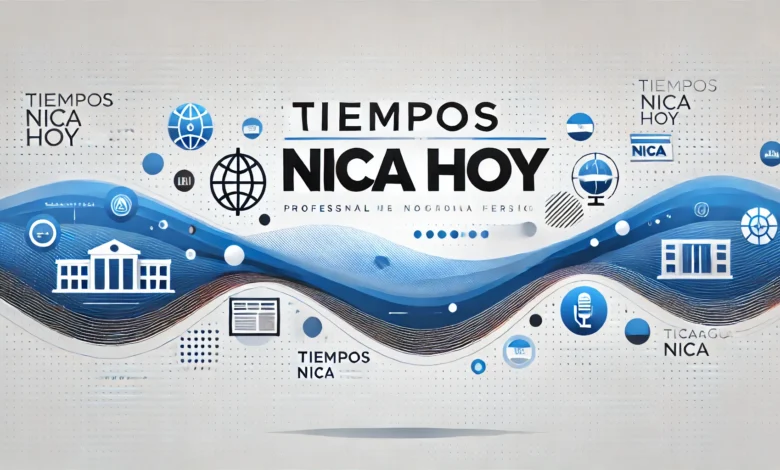Tiempos Nica Hoy: Understanding Today’s Nicaragua Through News, Culture, and Daily Life

When people search for “tiempos nica hoy”, they’re often looking for a snapshot of Nicaragua in the present moment—whether that means current news, cultural trends, or the everyday rhythm of life in the country. Nicaragua, known as the land of lakes and volcanoes, is not only rich in natural beauty but also in history, politics, and traditions that shape its identity. Keeping up with “tiempos nica hoy” is a way of staying connected to the pulse of the nation.
In this article, we’ll explore what “tiempos nica hoy” really captures: the headlines that define the current era, the traditions that remain strong, and the challenges and opportunities facing Nicaraguans today. Whether you live in Nicaragua or are following from abroad, understanding these layers provides a deeper picture of what daily life in the country looks like right now.
What Does “Tiempos Nica Hoy” Mean?
At first glance, the phrase “tiempos nica hoy” simply translates to “Nicaraguan times today.” But it holds a deeper meaning than just a literal translation. It embodies the idea of looking at Nicaragua in the present tense, reflecting not only what’s happening in the news but also in the culture, society, and economy.
For Nicaraguans living abroad, searching for “tiempos nica hoy” is often a way to stay connected to home. It’s a bridge that keeps them updated about local developments, festivals, political updates, and even weather patterns. In that sense, it’s both informational and emotional—a reminder of roots and identity.
For those inside the country, the phrase is more about awareness of how life is shifting day to day. Nicaragua has a dynamic landscape, from political debates and economic shifts to celebrations of national pride. “Tiempos nica hoy” encapsulates the reality of being a Nicaraguan in today’s world, full of both challenges and resilience.
The Political Landscape in Nicaragua Today

Tiempos Nica Hoy One of the first things that comes to mind when talking about “tiempos nica hoy” is the political climate. Nicaragua’s government and politics often dominate headlines, both locally and internationally. From presidential elections to policies affecting trade and freedoms, politics shape much of the narrative about the nation.
In recent years, Nicaragua has seen debates around governance, international relations, and economic sanctions. These issues impact everything from the price of goods in local markets to the flow of foreign investment. Understanding the political climate is crucial because it sets the stage for how people live their daily lives, from business owners to students.
Despite political tensions, many Nicaraguans show remarkable adaptability. Conversations in cafes, family gatherings, and even social media platforms often buzz with discussions about government decisions and their effects. This level of civic engagement demonstrates how deeply intertwined politics are with the idea of “tiempos nica hoy.”
Economic Life and Daily Challenges
Another major layer of “tiempos nica hoy” revolves around economics. For many families, the economy is not an abstract concept but a lived reality felt at the grocery store, the gas station, or the local market. Inflation, job availability, and access to opportunities all play a role in shaping how people experience daily life.
Nicaragua has a mixed economy, with agriculture still playing a central role. Coffee, beef, and sugar remain important exports, while remittances from Nicaraguans living abroad also form a vital source of income for families. For many households, remittances act as a safety net, helping them manage expenses in times of financial uncertainty.
At the same time, entrepreneurship is thriving in unique ways. Street vendors, small businesses, and creative startups show how resilient Nicaraguans are in adapting to challenges. “Tiempos nica hoy” reflects this entrepreneurial spirit, where innovation meets necessity, and where community support often fills the gaps left by formal institutions.
Culture and Traditions That Define Today
While politics and economics are important, “tiempos nica hoy” would be incomplete without considering culture. Nicaragua’s traditions remain strong, even as the country modernizes. Festivals, music, and food bring people together, offering moments of joy and connection despite external challenges.
Take, for example, the colorful celebrations of La Purísima, a tradition honoring the Virgin Mary that lights up cities and towns with music, prayers, and fireworks. These cultural events serve as reminders of continuity and heritage, binding generations together.
Music and literature are also central. Nicaraguan poetry, influenced by greats like Rubén Darío, continues to inspire artists today. Meanwhile, marimba rhythms and folk dances echo through neighborhoods, blending the past with the present. In every festival, street food stall, and artisan market, you’ll find a reflection of “tiempos nica hoy” through the lens of culture.
The Role of Media in Shaping “Tiempos Nica Hoy”
Media plays a significant role in how people understand and interpret the concept of “tiempos nica hoy.” With the rise of digital platforms, access to news and updates has become faster and more widespread. Social media platforms, in particular, serve as real-time spaces where people share information, opinions, and experiences.
Traditional outlets still hold influence, but many Nicaraguans now turn to online sources for daily updates. Whether it’s a breaking news story, an update on fuel prices, or a video of a local festival, digital media captures the pulse of the nation in ways that older formats couldn’t.
Of course, the challenge of misinformation also looms large. Part of navigating “tiempos nica hoy” involves learning how to discern reliable sources from rumors. In a world where narratives can spread quickly, the ability to critically evaluate news is an essential skill for Nicaraguans who want to stay informed.
Everyday Life in Modern Nicaragua
Beyond headlines and cultural highlights, “tiempos nica hoy” also reflects the simple rhythms of daily life. For many, this means balancing work, family, and community. In cities like Managua, Granada, and León, urban life is bustling, with markets full of activity and streets alive with commerce. In rural areas, daily routines revolve more around agriculture, traditions, and tight-knit communities.
Transportation, education, and healthcare also form part of this picture. While challenges exist in terms of infrastructure and access, Nicaraguans often rely on resourcefulness and community solidarity to manage. For instance, families often help each other with childcare, transportation, or shared meals—small but significant gestures that highlight resilience.
Leisure time also reflects the “tiempos nica hoy” spirit. From soccer matches in neighborhoods to weekends spent at Lake Nicaragua or the Pacific beaches, recreation remains a central part of life. It’s these everyday experiences that balance the weight of larger political and economic challenges, showing the human side of Nicaragua today.
Nicaraguans Abroad and the Meaning of “Tiempos Nica Hoy”
For the Nicaraguan diaspora, “tiempos nica hoy” has a special resonance. Many Nicaraguans live in countries like the United States, Costa Rica, and Spain, sending remittances home while staying connected to their roots. For them, the phrase symbolizes both distance and closeness—being away from home but deeply tied to its current reality.
Diaspora communities often follow Nicaraguan news closely, participate in cultural celebrations abroad, and advocate for issues affecting the country. Their perspective adds an international layer to the meaning of “tiempos nica hoy,” one that bridges borders and unites families across distances.
In many ways, the Nicaraguan diaspora helps keep traditions alive and amplifies the voice of Nicaragua on the global stage. Their stories are also part of today’s narrative, proving that “tiempos nica hoy” extends beyond physical borders.
Why Understanding “Tiempos Nica Hoy” Matters
At the end of the day, the importance of “tiempos nica hoy” lies in awareness and connection. Whether you’re a Nicaraguan living in Managua or Miami, staying informed about what’s happening in Nicaragua today is crucial for maintaining identity, making informed decisions, and fostering community.
By understanding the layers—political, economic, cultural, and personal—you gain a fuller picture of what it means to live through these times. It’s not just about reading the news; it’s about recognizing the resilience, creativity, and spirit of Nicaraguans as they navigate the present.
“Tiempos nica hoy” is ultimately more than a phrase. It’s a reflection of a nation’s heartbeat, a snapshot of both challenges and triumphs, and a reminder that every moment in Nicaragua’s story matters.
Final Thoughts
Exploring “tiempos nica hoy” means diving into the essence of Nicaragua as it stands today. From politics and economics to culture and daily life, the phrase captures the reality of a nation that continues to move forward despite complexities.
For locals, it’s a reminder of their resilience and heritage. For the diaspora, it’s a way to stay connected to home. And for outsiders, it’s an invitation to better understand a country that is as complex as it is beautiful.
By paying attention to the “tiempos nica hoy,” we not only see what’s happening in the moment but also gain insight into the journey of Nicaragua—its struggles, its strengths, and its enduring spirit.



